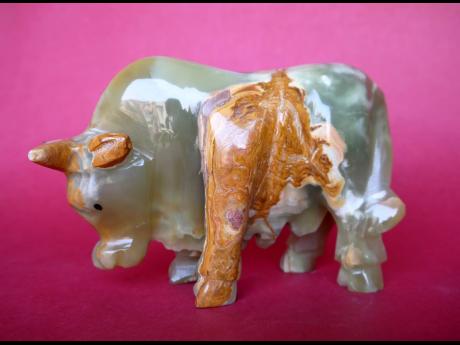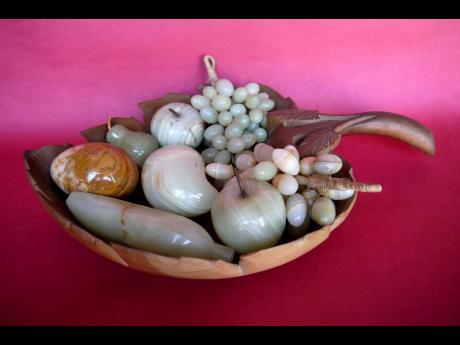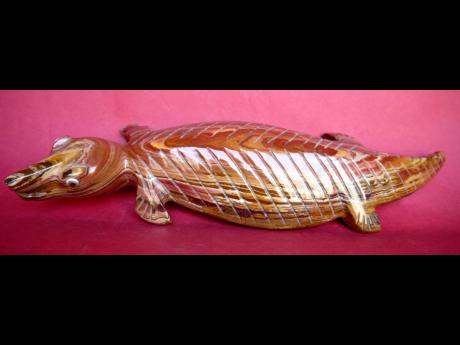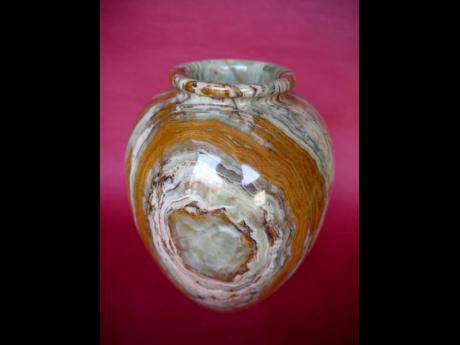A love affair with onyx
It was decades back that I got fascinated with those wonderful figurines carved from onyx. A colleague of mine, just having returned from posting in Islamabad, Pakistan had showcased some of those interesting pieces which she had brought to office, perhaps for gifting to her friends.
With my artistry background, I was immediately attracted to those swans, turtles and elephants elegantly carved out from different-hued marble. “It is onyx!”, she had exclaimed. The name reminded me of a couple of table lamps and broad-mouthed vases in pale yellow and brown colours of the stone which I had bought during my posting in Kabul, but these dark green-coloured shimmering, elegant figurines charmed me so much that she promised to get me some through her colleagues in the Mission.
While I proudly possessed those few green turtles which she got me, keeping her promise, I shopped for several more and many other interesting onyx figurines in Karachi when I got an opportunity to visit Pakistan on an official tour some years later. It so happened that I myself got posted to Islamabad in due course and, having been charmed by the onyx figurines during my official tours to Karachi, most of my hand baggage on return flights always comprised carefully packed charming figurines of elephants, horses, swans, turtles and other animals and vases of different sizes and shapes. Thus flourished my romance with onyx, also known as Sang-e-Sulemani or Sang-e-Hadeed, and so grew my collection to a couple of hundred pieces, including forty-odd turtles, a matching number of elephants and scores of horses, fish and birds in a variety of sizes, shapes and shades, clusters of which have since always curiously carved corners for their pompous presence in our living space, along with the strategic central-stage hold of those large onyx vases of exotic shapes with intricate naturally designed patterns.
EXOTIC FIGURINES
In stark contrast to their shimmer and high market price, low-paid artisans work for long hours to individually shape exotic figurines out of the easily malleable but brittle stone blocks, and then laboriously polish them on machines, facing health hazards by inhaling stone dust. There is a lot of breakage and exposure of fault lines during the making, which are carefully concealed through adhesives and resin fillings. As the stone is translucent, even dyes of bright colours are innovatively injected in the cracks to create fascinating designs in the stone. The end products reflect opulence and add elegant décor to our living spaces. Those who live lavishly in style, use the stone for added grandeur of their homes in tiles for walls and flooring, table tops, washbasins, or even bathtubs.
Associated with the planet Saturn, varieties of onyx stones are used for astrological and healing purposes as well. It is believed by some to sharpen senses and bring back confidence by removing negativity and overcoming emotions of sorrow and grief. Black onyx is used in jewellery and is regarded as the 10th wedding anniversary gemstone. It was immensely popular among Roman soldiers, who wore it as a talisman for courage and bravery on the battlefield. Rosaries made from black onyx are believed to have medicinal benefits.
What commercially or commonly are known as onyx stones are in scientific nomenclature alabasters or calcium alabasters, which are formed by deposits of calcium carbonate in water bodies rich in bicarbonate, generally in cavities in solids of limestone. As the levels of carbonate and the concentration of minerals and impurities within them give rise to different colours, a characteristic of onyx is that it is formed in strips. What is popularly known as marble onyx constitutes mainly calcite, followed by aragonite and other minerals like clay and quartz. Onyx thus comes in white and a variety of colours like black, brown, beige, orange, yellow, pink, red, green and sky blue, attributable to impurities and varying chemical compositions. In Europe, different varieties of onyx are found in France, Germany, Spain, Greece, Macedonia, Croatia, Albania, Portugal and Slovakia. It is also found in India, Turkey and Iran, and Brazil and Chile in South America, where also we bought plenty of handicrafts in onyx, apart from figurines and jewellery in the semi-precious stone lapis lazuli, for which Chile is famous.
RARE TO GET SIZEABLE PORTIONS
Because of the presence of iron oxide, veins or brownish red spots are common in the composition. Because of all this, it is rare to get sizeable portions of the stone in any uniform colours. While uniform formation of white colour is the least preferred, dark green onyx, which is also known as apple or jelly colour, being rare, is the most sought after and thus priced higher. Apart from Pakistan, green onyx is mined in Mexico, Iran, Afghanistan and Turkey.
Green onyx is found in the areas of Dalbandin and Noukundi, along the Pakistan-Afghan and Pakistan-Iran borders in Baluchistan, and was discovered there in 1960. While, in the first few decades, business houses in Pakistan profited the most by mining this malleable stone and marketed as attractive utility articles and handicrafts, later they lost it to the Italian importers and then, through a long-term contract to the Chinese in 2010, who would import most of it and, by using sophisticated technology, cut it into 2mm thin sheets for manufacturing tiles for export. As such, the domestic industry was left to be fed only through what was left out in rejection. Whatever remained for the artisans around Karachi and other scattered cottage industries for handicrafts of onyx and other stones like the coral stone, came from places like Jhully near Nukundi where the tribal chieftains who owned quarries of green onyx had set up colonies for workers during the 1980s when the export and the local trade was booming. Over the years, the prices of handicrafts from the green onyx have steadily gone high multi-fold, rendering them out of reach of the common man. I am happy I bought plenty already.
Bimal Saigal is a retired Indian diplomat. He was posted at the Indian High Commission in Kingston from 2004 to 2007.





